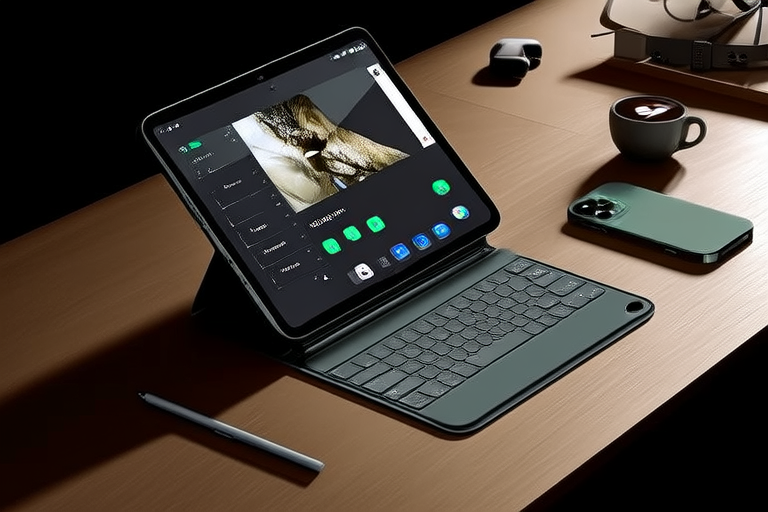“`html
Battery Life vs. Performance: Navigating the Trade-offs in Smartphones and Tablets
Introduction
When shopping for a new smartphone or tablet, consumers often face a critical decision: prioritize battery life or performance? This trade-off is central to the design and functionality of modern mobile devices. While some users may value long-lasting battery life over sheer processing power, others may require top-tier performance for demanding tasks like gaming, video editing, or multitasking. Understanding the nuances of this trade-off can help consumers make informed decisions that align with their specific needs.
Understanding Battery Life
Battery life refers to the duration a device can operate before needing to be recharged. In the context of smartphones and tablets, it is influenced by several factors:
- Screen Size: Larger screens consume more power, especially if they are high-resolution displays.
- Processor Efficiency: Modern processors are designed to optimize power consumption while maintaining performance.
- Software Optimization: Efficient operating systems and apps can extend battery life by reducing unnecessary background processes.
- Battery Capacity: Higher-capacity batteries provide longer usage time but may add bulk to the device.
Different usage patterns significantly impact battery life. For instance, heavy gaming, video streaming, and multitasking can drain a battery much faster than basic tasks like browsing the web or sending messages.
Understanding Performance
Performance in smartphones and tablets is determined by several key components:
- Processors: The central processing unit (CPU) handles most of the device’s computing tasks.
- RAM: Random Access Memory (RAM) allows the device to run multiple applications simultaneously without slowing down.
- GPU: The graphics processing unit (GPU) is responsible for rendering visuals, which is crucial for gaming and multimedia.
- Storage: Faster storage options, like UFS or NVMe SSDs, can enhance data transfer speeds and application loading times.
These components collectively contribute to the device’s speed, responsiveness, and ability to handle complex tasks efficiently.
The Trade-off Between Battery Life and Performance
Manufacturers must carefully balance battery life and performance to meet consumer expectations. Devices prioritizing performance often feature powerful processors, ample RAM, and advanced GPUs, which come at the cost of increased power consumption. Conversely, devices optimized for extended battery life may sacrifice some performance to conserve energy.
Real-world examples illustrate this trade-off. High-end gaming smartphones, such as the Samsung Galaxy S23 Ultra, prioritize performance with top-tier processors and large RAM, but they typically offer shorter battery life compared to budget-friendly models like the Google Pixel 6a, which focuses on efficient power management.
Advancements in technology, such as power-efficient chips and improved cooling systems, are helping to reduce this trade-off. For example, Qualcomm’s Snapdragon series has introduced processors that offer better power efficiency, allowing devices to achieve both longer battery life and higher performance.
Consumer Considerations
Consumers should consider their specific needs when choosing between battery life and performance. Here are some tips to help you make an informed decision:
- Usage Patterns: If you frequently engage in power-intensive activities like gaming or video editing, prioritize performance. Otherwise, focus on battery life.
- Optimization Tips: To extend battery life without sacrificing performance, enable power-saving modes, reduce screen brightness, and limit background app refreshes.
- Specific Use Cases: Longer battery life is essential for users who travel frequently or work in environments with limited access to charging stations. Conversely, those who need to handle demanding tasks regularly may prefer peak performance.
Future Trends
Emerging technologies hold promise for improving both battery life and performance. Some notable trends include:
- Fast Charging: Technologies like Qualcomm Quick Charge and USB Power Delivery allow devices to recharge rapidly, minimizing downtime.
- Wireless Charging: Wireless charging is becoming more common and efficient, offering convenience without the need for cables.
- Energy-Efficient Processors: Advances in semiconductor technology are leading to processors that consume less power while delivering better performance.
As these technologies mature, we can expect future smartphones and tablets to offer superior battery life and performance, making the trade-off less significant.
Conclusion
In conclusion, the trade-off between battery life and performance is a fundamental consideration when selecting a smartphone or tablet. By understanding the factors that influence each aspect, consumers can make informed decisions that align with their needs. As technology continues to evolve, advancements in hardware and software will likely reduce this trade-off, offering users the best of both worlds.
“`

